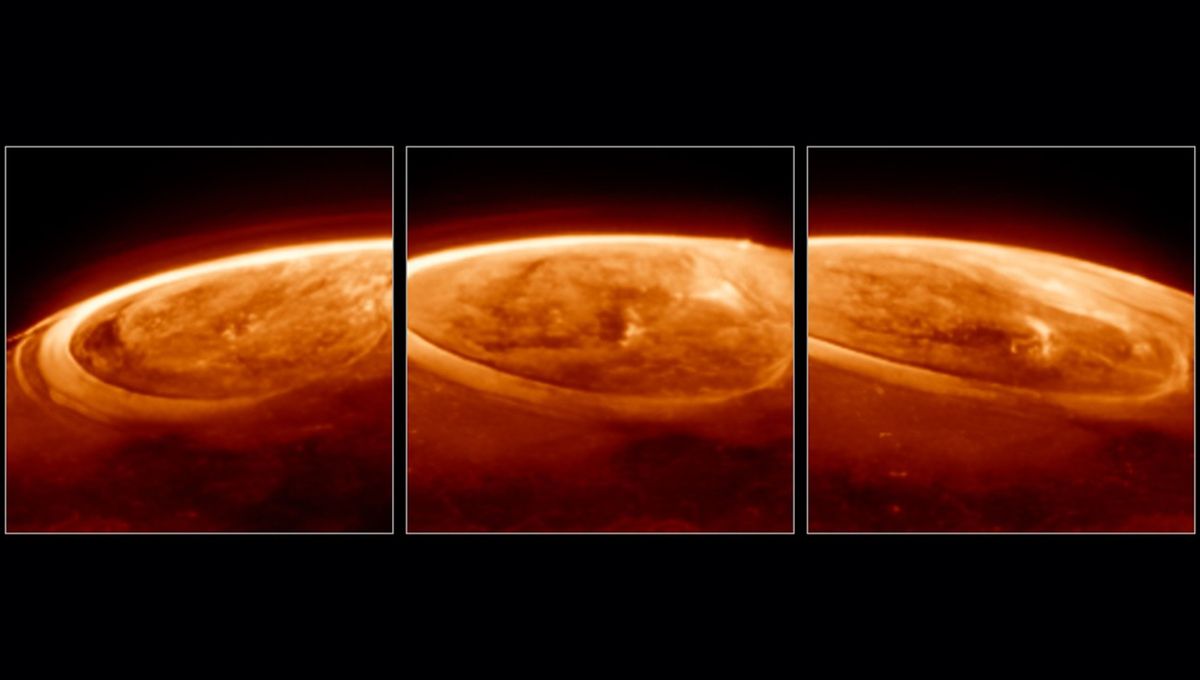
Jupiter has a stupendous magnetic field, so powerful that it makes our planet’s one look like a fridge magnet. It is 20,000 times stronger than Earth’s own, and its power is responsible for the creation of incredible aurorae displays, shining from x-rays down to the infrared – and it’s in infrared where new insights and new mysteries have come from.
Researchers have used the space telescopes JWST and Hubble to study the auroral phenomena on Jupiter. Hubble can see in visible light and ultraviolet light, looking at the more energetic of the events. JWST is an infrared telescope, and it has exquisite sensitivity so that it can do observations no other instrument has been able to do before.
The team focused on the very specific emission of trihydrogen cation (H3+). This is one of the most common ions in the universe, made of three bound hydrogen atoms that have lost an electron. Just recently, evidence suggested that it has more sources in space than previously thought.
The trihydrogen cation has been instrumental in another auroral discovery, the lost aurorae of Neptune, found again recently after missing for 36 years. On Jupiter, the cation has been suggested as a possible dark matter detector, but in this study, it was used as a proxy for the aurorae variability. It turns out that they change faster than previously thought. Crucial to those observations was data collected on December 25, 2023.
“What a Christmas present it was – it just blew me away!” lead author Jonathan Nichols, from the University of Leicester, said in a statement. “We wanted to see how quickly the auroras change, expecting them to fade in and out ponderously, perhaps over a quarter of an hour or so. Instead, we observed the whole auroral region fizzing and popping with light, sometimes varying by the second.”
This discovery alone is extremely important to understand the dynamics of the Jovian aurorae, but the unexpected variability is not the only baffling point for these observations. Researchers also discovered a discrepancy between the JWST signal and the Hubble signal: the brightest infrared aurora has no counterpart in ultraviolet light.
A possible reason for this, touted by the researchers, is that not only are there high-energy particles hitting the atmosphere – creating the very bright aurorae – but there are also low-energy particles falling onto Jupiter. This would explain the discrepancy between the space telescope and a large flow of low-energy particles that was not considered possible before.
However, it remains unclear what exactly is going on. Jupiter’s magnetosphere is an extremely complex structure, and huge too. It extends 7 million kilometers (4.35 million miles) in a Sunward direction and almost to the orbit of Saturn away from the Sun. Researchers have recently shown that solar storms can compress it, causing dramatic increases in temperature on vast regions of the planet.
The new study is published in the journal Nature Communications.
Source Link: Jupiter’s Aurorae Change Faster Than Previously Thought – But There’s Something Even Odder Going On